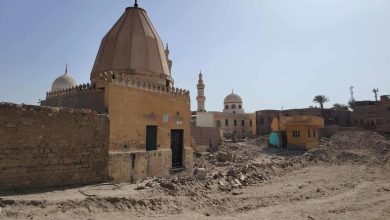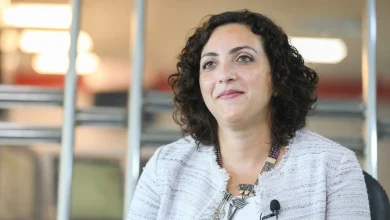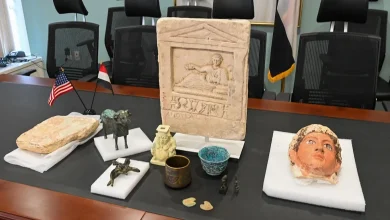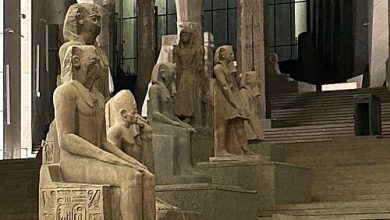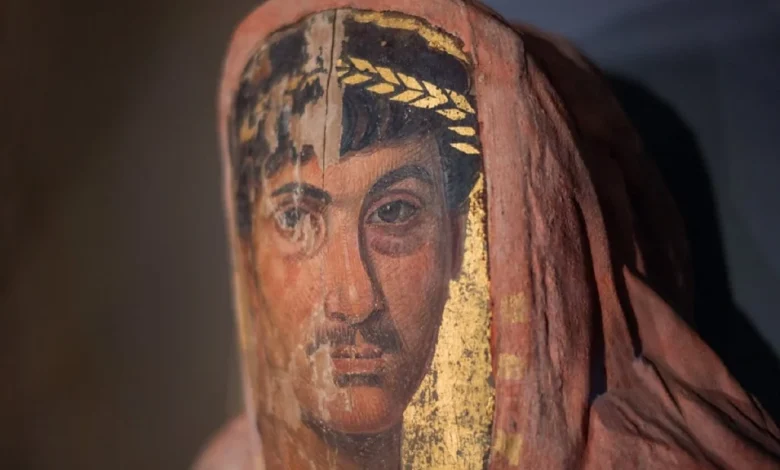
Secrets of the early painters: How did the Fayoum portraits survive for 1,600 years?
The Fayoum portraits remain a great artistic mystery, a subject of artistic and scientific study around the world. They are still surrounded by questions: What do these realistic faces reveal about identity and status?
The Fayoum portraits have survived for thousands of years, bearing witness to the skill of the ancient artists who used special techniques to preserve them. These portraits date back to between 200 and 400 AD and were part of the Egyptian mummification ritual carried out by Greek painters who settled in Egypt. Their purpose was to grant immortality to their owners by depicting their faces on mummies.
On the occasion of the reprinting of the book “The Mysterious Fayoum Portraits: Faces from Ancient Egypt” by artist Yovrosin Doksadies, with a new introduction by novelist Ahdaf Soueif, published by the American University in Cairo, we ask the question: What is the secret behind these paintings remaining intact for 1,600 years? And who were the first painters?
The Fayoum Portraits
When you head south in Egypt, you reach a gap in the desert escarpment, and then you arrive at a wide circle of green, olive trees, barley fields, and sun-dried mud houses. Here in the Fayoum Oasis, people lived and passed away, and they made sure to document their appearance on their mummified bodies with realistic paintings of their faces.
These realistic paintings were the first to represent portrait art. They were mistakenly called “Coptic paintings” and were used as masks on mummies. They were created by Greek painters who settled in Egypt and preserved the Egyptian embalming customs.
Painting for Eternity
The documentary film “Portraits of Fayoum: A Funeral Painting of Roman Egypt,” produced by the American Metropolitan Museum in 1988, recounts part of the history of Fayoum painting. The film reviewed the technique of painting similar portraits, which were characterized by precise details for each face, including hair, jewelry, and the curve of the cheekbones, with dark, large, unfocused eyes.
Art historian Richard Brilliant discussed the painting technique used in Fayoum portraits, saying that ancient painters used beeswax saturated with vegetable dyes and applied it to thin strips of wood, either cedar or cypress. When the wax cooled and hardened, the artist had to work quickly, which explains the unusual freshness of the paintings.
“For them, drawings are a means of immortality, and a single mistake becomes a path to oblivion,” Brilliant continues, explaining that these paintings were created by local artisans using a limited range of forms, but the painters succeeded in documenting the essence of human subjects.
These realistic paintings were the first to represent portraiture. They were mistakenly called “Coptic paintings” and were used as masks on mummies. They were created by Greek painters who settled in Egypt and preserved Egyptian embalming customs.
Painting for Immortality
The documentary film “Portraits of Fayoum: A Funeral Painting of Roman Egypt,” produced by the American Metropolitan Museum in 1988, recounts part of the history of Fayoum painting. The film reviewed the technique of painting similar portraits, which were characterized by precise details for each face, including hair, jewelry, and the curve of the cheekbones, with dark, large, unfocused eyes.
Art historian Richard Brilliant discussed the painting technique used in Fayoum portraits, saying that ancient painters used beeswax saturated with vegetable dyes and applied it to thin strips of wood, either cedar or cypress. When the wax cooled and hardened, the artist had to work quickly, which explains the unusual freshness of the paintings.
“For them, drawings are a means of immortality, and a single mistake becomes a path to oblivion,” Brilliant continues, explaining that these paintings were created by local artisans using a limited range of forms, but the painters succeeded in documenting the essence of human subjects.
Who are the owners of the Fayoum portraits?
These paintings are realistic, painted with wax on wooden panels. These famous paintings can be seen in major archaeological museums around the world. Currently, there are about 900 known mummy portraits discovered in the tombs of the Fayoum region in Egypt.
Brilliant revealed the behind-the-scenes story, saying that the portrait was painted while the person was still alive. After completion, it was hung in the person’s home. According to his description, it remained there for many years until the time of death, after which the body was embalmed and the portrait was placed on the face of the deceased as a mask.
Brilliant also described the social status of the owners of these paintings, saying: “A few of them were wealthy, but most were of modest means, such as merchants, craftsmen, and housewives who lived on the margins of the Roman Empire. These people were Greeks, some of them Jews and from the Levant, and some Roman bureaucrats who came after Alexander’s conquest of Egypt.”
About their lives in Egypt, he continued: “By the second century, they were able to speak and write like the Greeks and wear linen clothes like them, but when they passed away, they passed away as Egyptians. On that journey to the afterlife, they invoked the protection of the god Anubis.”
The first painters
The Fayoum portraits in their current form owe their existence to a wax technique developed by Pausias, a Greek painter who lived in the first half of the fourth century. Pausias worked on developing the wax painting technique, which dates back to ancient times and was called “encaustic” from the Greek word “enkaustikos,” meaning “burning,” in reference to the process of blending colors with heat. This process is essential for classifying paintings as encaustic art. According to the website “allthingsencaustic,” Pausias is said to have been the first to invent this technique, which he also applied to painting house ceilings. He was proud of his ability to complete a painting in just 24 hours. One of his most notable works of art is the painting “The Sacrifice,” which was later improved upon by his son Aristolaos.
The historian Pliny the Elder mentioned that Emperor Nero ordered a huge portrait of himself to be painted using “linen.” This indicates the possibility of using wax on canvas to apply works of art.
The Fayoum mummy paintings, produced under Greek influence in the second and third centuries AD, provide conclusive evidence that these paintings were executed on canvas. The canvas was prepared in a similar way to wood, stretched onto a wooden board or assembled from sheets to form a uniform surface.
Who are the owners of the Fayoum portraits?
Most Fayoum portraits do not bear any information about their owners, but the book The Mysterious Fayoum Portraits: Faces from Ancient Egypt by researchers Yovrosin Doksadies and Hadaf Suweif presents the history of these artists.
According to the writer, the portraits date back to the Fayoum region of Roman Egypt during the first three centuries AD. The region’s population was a mix of Greeks, Egyptians, Romans, Syrians, Libyans, Nubians, and Jews.
In ancient Egyptian tradition, the bodies of the dead were mummified with a painted portrait placed on the mummy to preserve the memory of the person in an artistic and lasting way. More than 1,000 portraits of different people of all ages and genders—men, women, and children—have been discovered.
In her book, Yovrosin Doxiadis presents modern analyses and offers around 200 portraits of the best examples, classified according to where they were discovered in Fayoum. Doxiadis’ study also shows how the Fayoum paintings are related to Byzantine icon painting, linking this artistic tradition to ancient Greek art and the Renaissance.
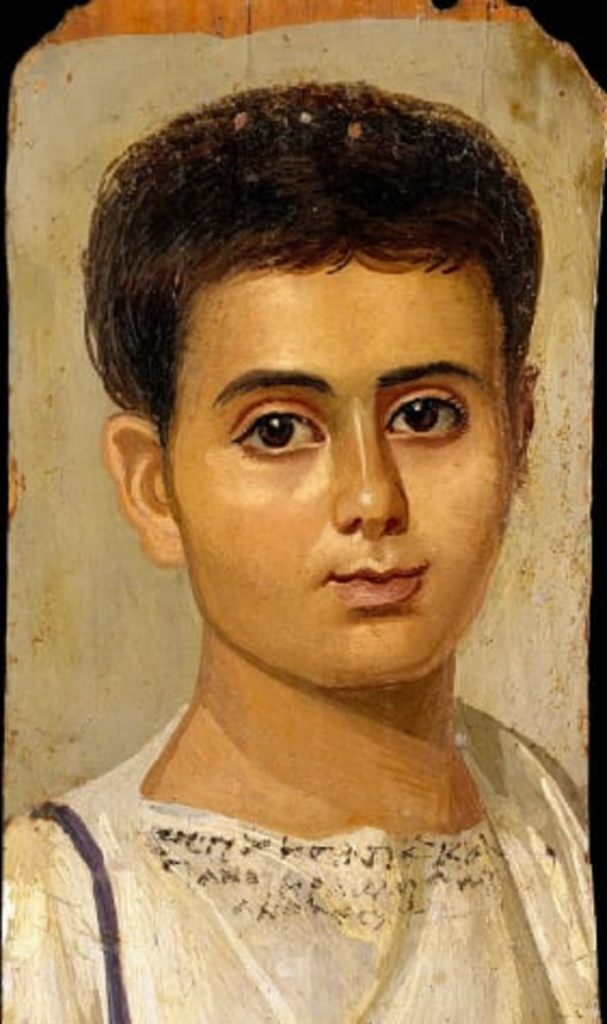
Sayed Izidora
One of the Fayoum portraits bears the signature “Sيد إيزيدورا,” the name given to the artist who painted a distinctive mummy portrait of a woman in the Getty Museum collection. The artist’s name was deduced from the word “إيزيدورا” written on the side of the cartonnage. It is assumed that it refers to the name of the woman depicted in the portrait.
Isidora worked in Roman Egypt in the early first century AD. He was known for his skillful use of a small spoon to apply wax paint, which helped bring out the subtleties of colors such as yellow, brown, pink, and copper green.
How did the Fayoum portraits remain so vivid?
The Fayoum portraits are of historical importance, reflecting the artistic skill that accompanied the mummification of the dead during that period. These portraits are also evidence of the durability of the wax painting technique. In this context, Ralph Meyer explains in his book The Artist’s Guide to Materials and Techniques (5th edition) that “the wax burial portraits of Fayoum on wooden panels have survived remarkably well for more than fifteen centuries. This proves the durability of the wax medium.” He explains that their durability is due to stable temperature and humidity conditions and the absence of light. According to the website allthingsencaustic, encaustic painting is an artistic technique in which pigments are mixed with hot liquid wax. Artists can adjust the consistency of the paint by adding resin or oil, which is commonly used on canvas, to the wax.
After applying the paint to the surface, whether wood, plaster, or canvas, the surface is heated using a special element. This causes the brush or spoon marks to blend into a uniform layer of color. This burning of the colors is an essential element of the wax painting technique. The wax used in this technique has many of the characteristics of oil paint, such as giving a shiny and attractive effect. It also provides great scope for expression through elegant and expressive brushstrokes. However, keeping the wax at a warm temperature is a major practical challenge.
The evolution of encaustic painting
With the fall of the Roman Empire, the art of encaustic painting largely disappeared. According to the website “allthingsencaustic,” the ancient Greeks used wax and resin to insulate and decorate their ships. These materials protected the ships from the effects of moisture and external factors.
Homer, who wrote around 800 BC, refers to painted warships sailing to Troy. This highlights the importance of this technique in protecting ships and enhancing their appearance (The Art of Encaustic Painting, Joan Matera, p. 15). Beeswax has a high resistance to moisture, making it an ideal material for sealing and preservation. The Roman historian Pliny the Elder noted in his book Natural History that “painting with wax, especially when applied to vessels, will never be affected by the effects of the sun, wind, or salt water.”
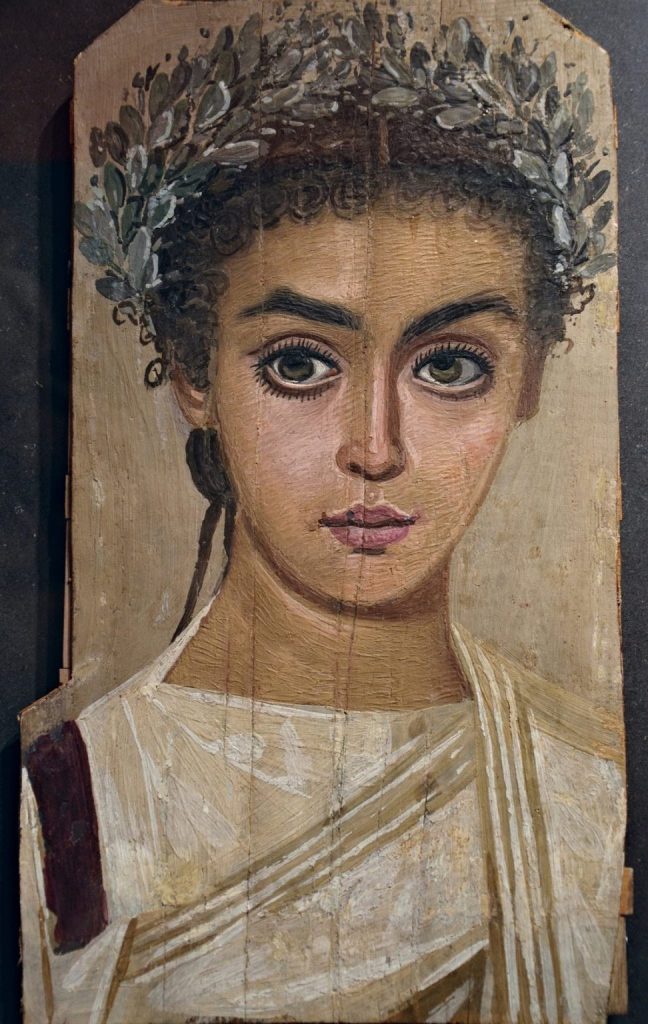
The Modern Renaissance
In the 20th century, electricity and modern tools made wax painting easier. Mexican muralist Diego Rivera began using wax painting in the 1920s. Rivera’s first government-commissioned mural, Creation (1922-1923), was painted with wax and gold leaf.
In 1938, Karl Zierb, a trainee chemist, began researching and experimenting with wax and pigments. Over the next two years, he worked on developing a formula for encaustic painting and reintroduced the technique. He was head of the painting department at the Museum School of Fine Arts in Boston.

